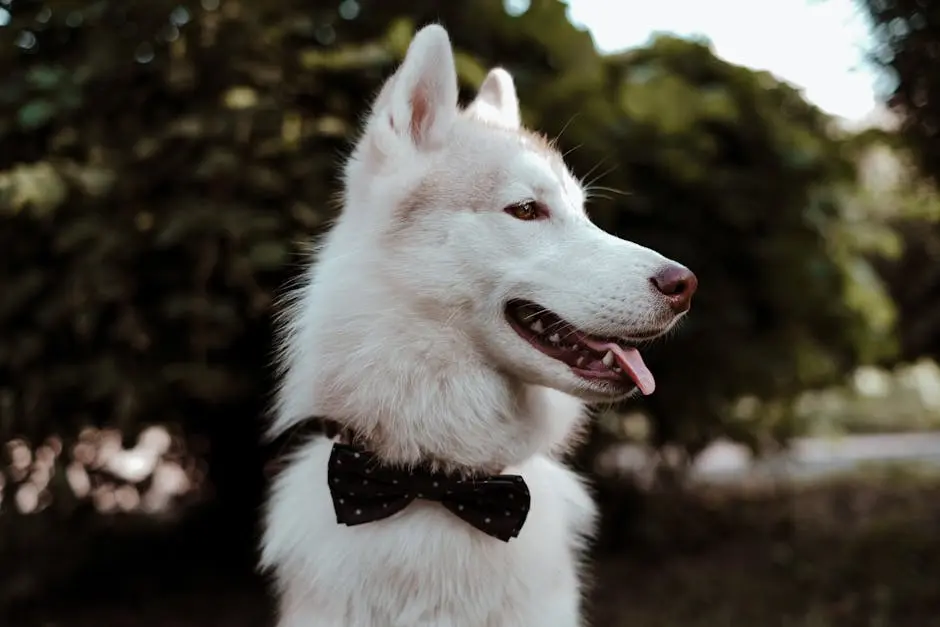Bow ties for dogs have become a popular accessory in recent years, adding a touch of charm and personality to our furry friends. But, as with any pet accessory, a common concern arises: are they comfortable for dogs to wear? In this blog, we’ll explore various aspects of dog bow ties to answer this question for pet owners.
Understanding Your Dog’s Comfort Needs
Dogs are unique individuals, much like humans, with their own preferences and comfort levels. Understanding your dog’s comfort needs is essential when considering any accessory, including bow ties for dogs. While some dogs may take to the stylish accessory with ease, others might find it restrictive or uncomfortable. It’s important to observe your pet’s typical behavior to gauge how they react to new items.
For instance, if your dog is generally tolerant of wearing clothing or collars, they may be more likely to enjoy wearing a bow tie too. Conversely, if your dog tends to dislike wearing any type of accessory, you may need to introduce the bow tie gradually to help them adjust.
Additionally, consider your dog’s breed and size. Smaller breeds may have different sensitivities to tight-fitting accessories compared to larger breeds. Taking time to notice how your dog moves and interacts with their accessories is crucial in ensuring their comfort.
Choosing the Right Size for Your Pup
One of the critical factors affecting comfort is the fit of the bow tie. A poorly fitting bow tie can cause irritation, while a well-fitted one can enhance your dog’s confidence and style. When choosing bow ties for dogs, it’s essential to measure your dog’s neck correctly to select the appropriate size.
You should allow for a snug fit without being tight—if you can fit two fingers under the bow tie comfortably, you’re likely on the right track. Furthermore, many brands offer adjustable options that can provide a more tailored fit as your dog grows or if their body shape changes.
It’s also worth considering the style of the bow tie. There are clip-on versions that can be clipped to the collar and costume-style bow ties that are designed to be worn as part of a full ensemble. Each of these styles may fit differently, so it’s wise to experiment to see what your dog prefers.
Materials Matter: Finding Soft Fabrics
The material of the bow tie plays a significant role in your dog’s comfort. Soft, breathable fabrics such as cotton, silk, and polyester blends are often best for bow ties for dogs. These materials help prevent irritation while allowing for movement.
In contrast, rougher materials can cause chafing and discomfort. Always check the product descriptions before purchasing, and if possible, feel the fabric to ensure it’s soft to the touch. Many brands now cater to pets with sensitive skin, offering options made from hypoallergenic materials, which can greatly enhance comfort.
Moreover, consider how the bow tie is constructed. Look for designs that do not have rough seams or added embellishments that could irritate your dog’s skin. A well-made bow tie made from quality materials will not only look great but also feel pleasant against your dog’s fur.
Observing Your Dog’s Behavior
Once you have introduced a bow tie to your dog, it’s essential to observe their behavior closely. Are they trying to scratch at it? Do they appear anxious or distressed? These are signs that they may not be comfortable with their new accessory. In case of any negative reactions, it’s advisable to remove the bow tie immediately.
Additionally, positive signs are equally important to note. If your dog wags their tail, prances around, or shows other signs of joy while wearing the bow tie, it’s a great indication. This means they likely feel good about how they look and enjoy the added flair to their appearance.
Changing accessories can be a bit overwhelming for some dogs. Patience is key. Allow your pup some time to adjust and encourage them with treats or affection when they wear the bow tie. Your observations will help determine whether it’s a suitable fashion choice for them.
Tips for Introducing Bow Ties to Your Dog
To ensure a positive experience when introducing bow ties, start slowly. Allow your dog to sniff and investigate the bow tie before attempting to put it on them. This initial exposure can create a sense of curiosity rather than fear.
After your dog has had time to explore their new accessory, try placing it on them for brief periods. Initially, only leave the bow tie on for a few minutes and gradually extend this time as your pet grows more accustomed to it. Praise them verbally and offer treats to associate wearing the accessory with positive experiences.
Remember, training works wonders! With some patience and positive reinforcement, your dog can learn to wear their bow tie comfortably and confidently. Soon, they may prance around proudly, showcasing their stylish new attire, proving that bow ties for dogs can indeed be both fashionable and comfortable!
Final Thoughts on Dog Bow Ties
Ultimately, whether or not a bow tie is comfortable for your dog depends on several factors, including fit, material, and your dog’s own personality. By considering these elements, owners can ensure their pets look stylish without sacrificing comfort.






0 comments